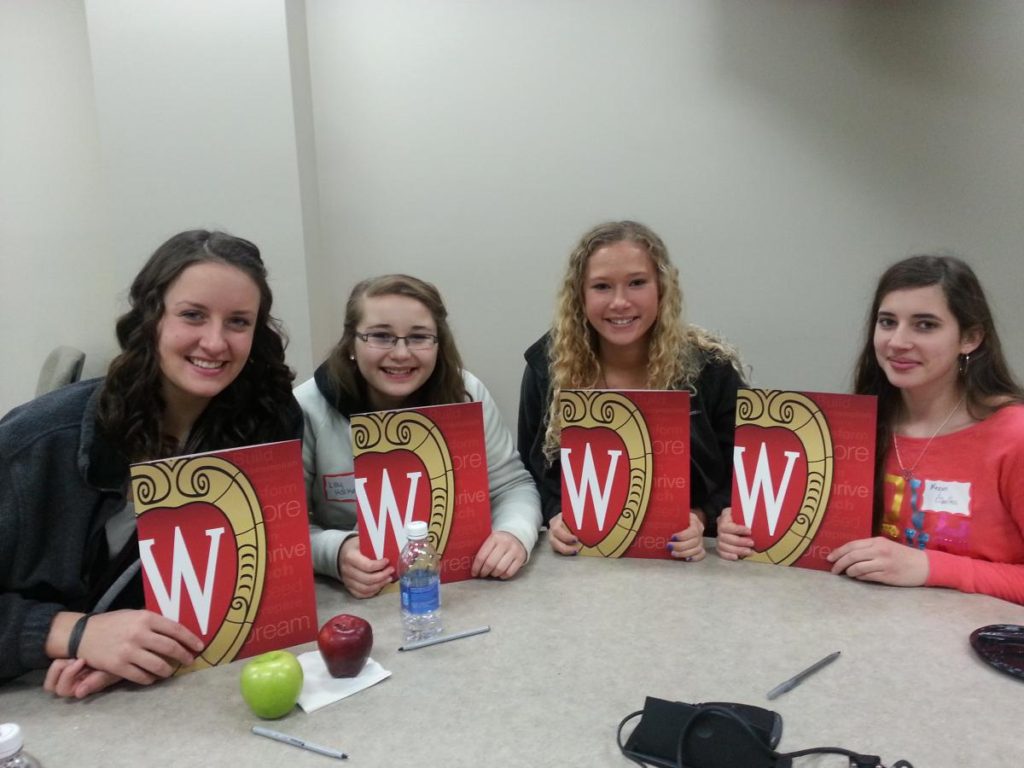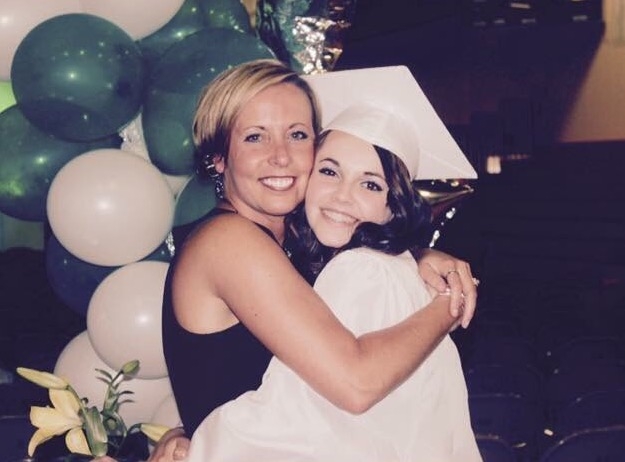Even as agricultural counties improve programs, students aren’t getting to the flagship university.
Samantha Follen had known “pretty much forever” that she wanted to go to UW-Madison.
At Adams-Friendship High School (AFHS) in rural central Wisconsin, Follen worked hard to earn the grades and test scores she needed to be accepted. With the help of teachers, as well as friends and family in her tightly-knit community, she achieved her goal.
Now a rising junior at UW-Madison, Follen is grateful for the work of the dedicated staff at AFHS, whom she said made sure everyone had a plan for after high school. But she also acknowledges that in her small town, she wasn’t afforded the same educational opportunities as many peers from urban areas.
“There were only a handful of AP classes, and we didn’t have weighted GPAs or anything like that,” Follen said. “[AFHS] was a good experience … but definitely a lot less opportunity.”
AFHS, just 90 minutes from Madison, serves the entirety of Adams County, which holds the dubious distinction of sending the fewest students per capita to UW-Madison of any county in the state.
Follen is one of seven UW-Madison undergraduates from Adams County. For reference, Dane County is 25 times larger in population than Adams, but sends roughly 440 times as many students to the flagship university.
This isn’t a problem confined to one community—Wisconsin’s most rural counties consistently send far fewer students to UW-Madison than should be expected based on their populations. Adams-Friendship High School is located 90 minutes north of Madison and enrolls about 500 students.
One obvious reason for this is that wealthier districts have more resources to spend on college preparation programs, a phenomenon Follen knows from experience. After growing up in Adams, she spent her middle school years in Waunakee, just north of Madison. She said living in a middle-class suburban community made her realize just how few resources Adams had for its students.

But the economic contrast is even more stark than it initially appears. Tanya Kotlowski, AFHS’s principal, says that the extreme poverty in Adams County creates “social and emotional needs” that the school and community have to use their limited resources to meet.
“Just at our high school alone, we have upwards of 70 percent on free and reduced lunch,” Kotlowski said. “Alcohol and drug use, health issues … both as a county and as a school district, we support those things very heavily because of who our constituents are.”
But Kotlowski, who grew up in Adams County, contends that the area’s challenges should not mean students don’t get a chance to attend college. As principal, Kotlowski has implemented a rule for all seniors: if you don’t have a post-high school plan, you don’t walk at graduation. Students must choose either a college plan, an employment plan, or to join the military.
For students who choose college, AFHS staff members work with them one-on-one to help them reach their goals. This is especially important, Kotlowski says, in a community where almost every high schooler would be the first in their family to attend college.
“If [very few] of our kids have an immediate family member who has had that experience, we know we have to support them very heavily,” Kotlowski said. “And we do.”
As a result, during Kotlowski’s six-year tenure, AFHS has seen improvement: more students are choosing to attend college, especially local two-year colleges. But the success has not translated to more AFHS graduates at UW-Madison.
Follen says even though she knew she had the motivation to attend a prestigious four-year university, she had to “squeeze every opportunity she had” to get there.
“You had to really want it to get it,” Follen said. “You had to have really good relationships with your teachers, and have connections, and take that extra step … you had to exhaust all the options you’re given, and then try to find more opportunities.”
Unfortunately, most AFHS students aren’t able to take the extra step, Kotlowski said.
Kotlowski highlighted one student who she said was “one of the most outstanding young men” she has worked with in her 23 years in education. She said despite the fact that she “had no question he would work hard enough to get to the academic standards of UW-Madison,” his low ACT score prevented him from being accepted.
“One of the disservices to our students in areas like Adams is that the application criteria throws them out,” Kotlowski said. “45 percent of our students come to us below grade level … Our kids are improving like crazy, our growth data is off the charts, but that still doesn’t mean they’re at [UW-Madison’s] benchmark.”

And there’s one more factor that hinders rural representation at UW-Madison: confidence. John Sharpless, a UW-Madison history professor, says the “primary reason” rural students are underrepresented is because they don’t feel like they belong at UW-Madison.
“[Rural students] simply believe that if they apply here, they won’t be accepted, and if they’re accepted they won’t be able to afford it,” Sharpless said. “One of the messages this campus sends to the world is that we’re very competitive, we fancy ourselves one of the leading universities … That often gives potential students the idea that they can’t find a place here.”
Kotlowski, a UW-Madison graduate, echoed Sharpless’ sentiment, saying she doesn’t think AFHS students “have any confidence to apply to UW-Madison.”
UW-Madison officials say the school is doing its best to ensure that Wisconsin’s rural students are well-represented at UW-Madison.
“Rural students, particularly first-generation college students, are an important part of our outreach,” Meredith McGlone, a UW-Madison spokesperson, said. “We believe programs like Chancellor Blank’s Badger Promise initiative will do even more to make campus accessible to such students.”
Sharpless praised Blank’s efforts, but said the university could be doing more.
“We have programs that are in place to work with minority students who are coming out of high schools in central cities. We could have a similar program for rural and small-town students,” Sharpless said. “Bring them in for summer programs … so they learn to be comfortable in the Madison environment and not intimidated.”
Follen agreed that having more opportunities to get acquainted with UW-Madison would be helpful for rural high schoolers. She said in her first year of college, she was “really scared.”
“It’s a pretty competitive environment … I was definitely out of my comfort zone,” Follen said. “I think that can scare people off.”
But despite this, she says she is happy she chose to attend UW-Madison. Although she acknowledged the drawbacks of attending high school in a place like Adams County, she encouraged students from rural areas to “take advantage of all the positive things you have.”
“Mrs. Kotlowski would always say ‘I don’t have kids, and I love you guys like my own kids,’ and I think that’s really special,” Follen said. “The sense of community in a town like Adams is so strong, and they’ll support you the whole time. Take advantage of that.”
/ The Daily Cardinal